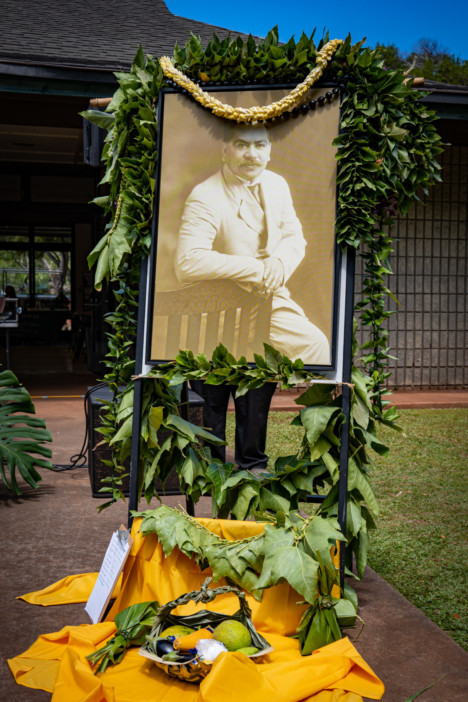A Living Legacy
By Jack Kiyonaga, Editor
On March 22, Ho’olehua-Pala’au residents celebrated a century of homesteading, along with the birthday of their champion, Prince Jonah Kuhio Kalaniana’ole.
“This is land that was passed down for four generations,” explained Charlie Kaahanui, president of the Ho’olehua Homesteaders Association. “If it wasn’t for Kuhio, this wouldn’t have happened…We wouldn’t have our lands.”
Kalama’ula was the first ever Hawaiian homestead lands in the state, started in 1922. Ho’olehua-Pala’au was the third such homestead project in Hawaii.
This year, Ho’olehua Homesteaders Association decided to host a celebration to put a festive mark on their centennial birthday. Held at the Kualapu’u Recreation Center, it featured food and crafts booths, along with music, dance and displays showing the history of the original Ho’olehua pioneers.
Kalei Kailikini’s grandparents, Kalei and Harry Purdy, were among the original Ho’olehua homesteaders who received 40 acre lots between 1924 and 1926. Kailikini grew up on lot six, which her family still has.
Kailikini explained that she is proud of the efforts her grandparents made in carving out a new life on Molokai, moving here from Hawaii Island.
“We grew up kind of in a hard life,” said Kailikini. “It was school, work, church and farming.”
Early Ho’olehua homesteaders worked a type of agriculture called “dry land farming” according to a 1936 study conducted by the University of Hawaii on the then newly established homestead community. This type of agriculture focused on crops like sweet potatoes, pumpkins and squash. Early homesteading was a pioneering enterprise, which required creative solutions to challenges like irrigation, pests and lack of infrastructure. One early Ho’olehua homesteader innovation was a type of “pumpkin poi,” according to the University of Hawaii study.
As a delegate for the territory of Hawaii to the U.S. Congress, Prince Kuhio advocated for the establishment of homestead lands for Hawaiians. This vision eventually became codified in the Hawaiian Homes Commission Act of 1920, which set aside 200,000 acres statewide specifically for Native Hawaiians.
As Prince Kuhio put it: “our ancestors were not clerks, they were farmers and fishermen, and we should be like them; it is more healthy, and we will be happier.”
As such, the Ho’olehua homesteaders have long had a strong connection with Prince Kuhio.
That relationship between Kuhio and his people is still thriving today.
“That’s what this is all about,” Kailikini explained with pride. “This is where we belong.”












Don't have a Molokai Dispatch ID?
Sign up is easy. Sign up now
You must login to post a comment.
Lost Password